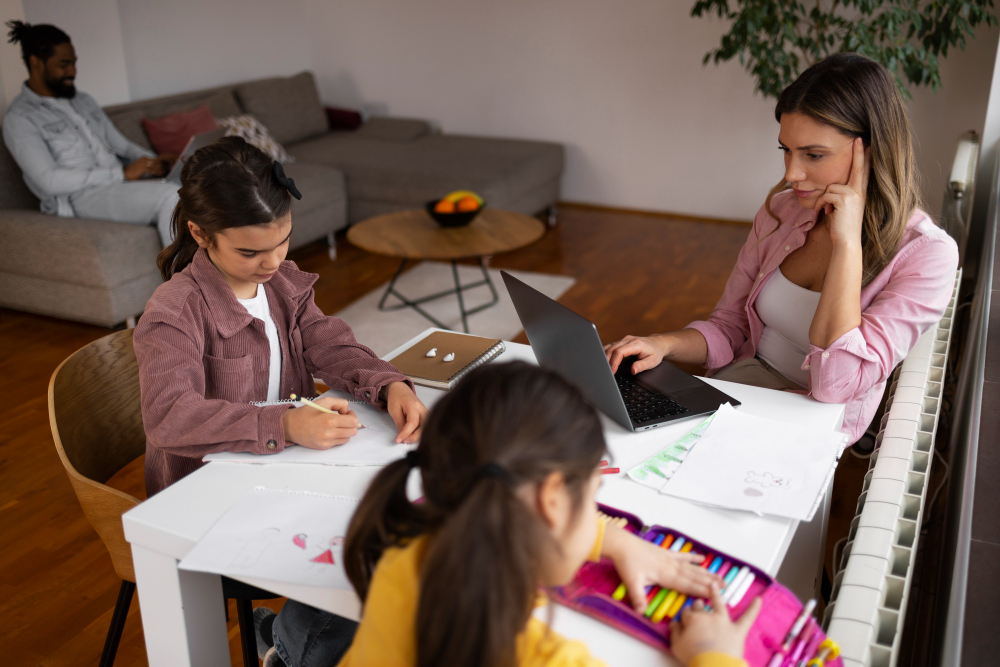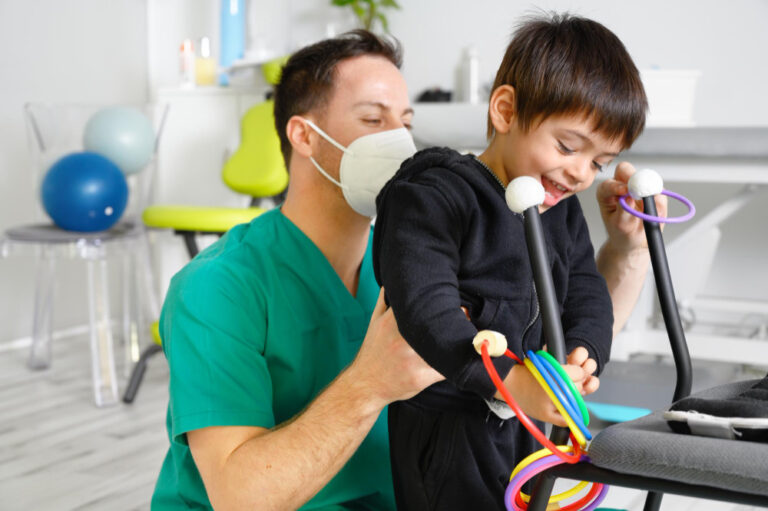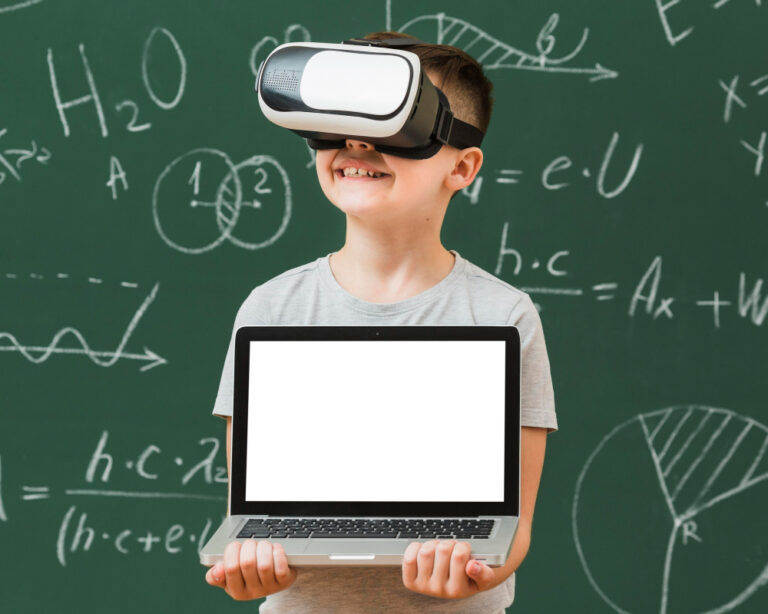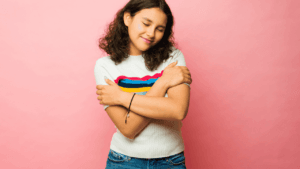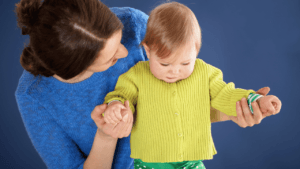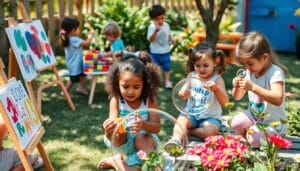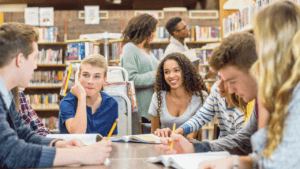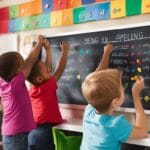
Enhance Student Engagement through Learning Preferences
Learning Preferences In today’s educational landscape, it is crucial for educators to tailor their teaching methods to meet the diverse learning preferences of their students. A one-size-fits-all approach does not effectively engage and motivate all learners, but personalized instruction can make a significant difference in student achievement. By understanding each student’s individual strengths, weaknesses, and learning styles, teachers can create personalized learning plans that cater to their specific needs.
Implementing a personalized learning approach involves using various strategies such as adaptive learning platforms, differentiated assignments, collaborative group work, and offering students more choices in their learning experiences. Regular progress monitoring ensures that instruction can be adjusted to address individual student needs and promote continuous growth.
Key Takeaways
- Personalized learning addresses the individual needs and preferences of students.
- Adaptive learning platforms and differentiated assignments are effective strategies for personalized learning.
- Encouraging collaboration and offering choices enhance student engagement.
- Regular progress monitoring allows for adjustments in instruction to meet individual student needs.
- Personalized learning promotes student achievement and motivation.
Strategies for Personalized Learning
https://www.youtube.com/watch?v=Sgh_tiBJb28
When it comes to personalized learning, educators employ a variety of strategies to tailor instruction to each student’s unique needs, preferences, and learning styles. These strategies encompass differentiated instruction techniques, individualized instruction methods, adaptive teaching methods, and student-centered instruction. By implementing these strategies, teachers can create a more engaging and effective learning environment that fosters student success.
Adaptive Learning Platforms
One effective strategy for personalized learning is the use of adaptive learning platforms. These platforms connect students to content that is tailored to their specific reading level or learning preference. By providing personalized learning experiences, adaptive learning platforms can engage students in a way that resonates with their individual learning needs. Additionally, adaptive assessments within these platforms can monitor students’ progress and provide valuable feedback to inform further instruction.
Differentiated Assignments
Offering differentiated assignments is another strategy to promote personalized learning. By giving students the freedom to choose assignments based on their interests and learning preferences, educators empower them to take ownership of their learning. This approach allows students to explore topics that they find engaging and relevant, enhancing their motivation and deepening their understanding of the subject matter.
Collaborative Group Work
Encouraging collaboration in groups is a valuable strategy for personalized learning. By organizing students into small groups based on their learning needs, educators can create a supportive and inclusive learning environment. Collaborative group work allows students to benefit from their peers’ diverse perspectives and skills, promoting active engagement and deeper learning.
Creating Learning Stations
Another effective strategy is the creation of learning stations that cater to different learning styles. These stations offer a variety of activities and resources that accommodate various preferences and strengths. By providing students with choices and opportunities to direct their own learning experiences, educators foster autonomy and increase overall engagement in the classroom.
Scaffolding and Assessment
Scaffolding is an important strategy in personalized learning. By offering support and guidance, educators can help students build their skills and knowledge gradually. This approach ensures that students feel supported and empowered to take on challenging tasks. Additionally, mixing up assessments to evaluate student comprehension and consider their strengths allows for a comprehensive understanding of each student’s progress and provides valuable insights for instructional adjustments.
Overall, employing these strategies for personalized learning enhances student engagement, motivation, and achievement. By adapting instruction to meet each student’s unique needs, educators create an inclusive and dynamic classroom environment that promotes success.
The Benefits of Personalized Learning
Personalized learning has several benefits for students. When instruction is tailored to their student learning preferences and styles, students are more engaged in the learning process and motivated to achieve. By designing instruction that caters to different learning styles, educators can create a more inclusive and effective classroom environment. Personalized learning also allows for instructional design that takes into account the unique needs of diverse learners. By addressing these needs, educators can ensure that all students have the opportunity to succeed and reach their full potential.
Inclusive Instructional Design
Personalized learning provides educators with the flexibility to design instruction that meets the diverse needs of students. By understanding and catering to different learning styles, instructors can create a classroom environment where all students can thrive. For visual learners, utilizing visual aids, charts, and infographics can enhance comprehension. Auditory learners may benefit from audio recordings, lectures, or group discussions. Kinesthetic learners can engage in hands-on activities and projects to reinforce learning. By accommodating these preferences, personalized learning ensures that every student has the chance to learn in a way that best suits them.
Increased Student Engagement
When students feel that their learning preferences are acknowledged and catered to, they become more engaged in the learning process. Personalized learning allows students to take ownership of their education. By incorporating activities and assignments aligned with their preferences, students are more motivated to actively participate and immerse themselves in the subject matter. When students are engaged, they are more likely to retain information and apply it in real-world contexts.
Personalized learning promotes student engagement by honoring their learning preferences and empowering them to take charge of their education.
Enhanced Academic Performance
When students are actively engaged and their learning preferences are met, academic performance improves. Personalized learning provides educators with the opportunity to identify and address gaps in students’ understanding. By tailoring instruction to fill these gaps and leveraging each student’s strengths, educators can facilitate more effective learning experiences. This targeted approach not only enables students to grasp challenging concepts but also fosters a sense of achievement and success. As a result, students are more likely to thrive academically in a personalized learning environment.
Table: Benefits of Personalized Learning
| Benefits | Description |
|---|---|
| Increased student engagement | Students are more motivated and actively involved in the learning process. |
| Improved academic performance | Targeted instruction and support lead to better understanding and higher achievement. |
| Inclusive instructional design | Designing instruction to cater to diverse learning styles creates an inclusive learning environment. |
Technology’s Role in Personalized Learning
In today’s digital era, technology has become an indispensable tool in education, transforming the way students learn and teachers instruct. When it comes to personalized learning, technology plays a crucial role in leveraging its power to cater to students’ individual needs and preferences.
One of the key applications of technology in personalized learning is the use of adaptive learning platforms. These platforms use advanced algorithms to analyze students’ performance and adapt the content accordingly. By connecting students to content tailored to their reading level or learning preference, adaptive learning platforms provide individualized learning experiences, ensuring that students are always challenged at their appropriate skill level. These platforms also have built-in assessment tools that enable teachers to monitor each student’s progress and provide targeted interventions.
Moreover, technology offers various educational technology (ed tech) tools that enhance personalized learning experiences. Collaboration software enables students to work together on projects, share ideas, and engage in meaningful discussions. Hybrid learning platforms combine traditional face-to-face instruction with online resources, allowing students to access educational materials anytime and anywhere. These technologies not only facilitate live interaction between teachers and students but also empower students to take ownership of their learning process.
The Power of Adaptive Learning Platforms
“The implementation of adaptive learning platforms has significantly improved student engagement and outcomes in personalized learning settings. These platforms provide real-time feedback to students, empowering them to take control of their learning journey.” – Dr. Jane Thompson, Education Specialist
The Benefits of Ed Tech in Personalized Learning
- Enhanced Instructional Delivery: Technology enables teachers to deliver personalized instruction through various modalities, such as videos, interactive simulations, and gamified learning platforms. This multimodal approach caters to diverse learning styles and preferences, fostering student engagement and retention of knowledge.
- Increased Student Engagement: Ed tech tools provide interactive and immersive learning experiences that captivate students’ attention and make learning more enjoyable. Through interactive exercises, virtual labs, and educational games, technology motivates students to actively participate in their learning, leading to higher levels of engagement and achievement.
- Improved Learning Outcomes: By leveraging the power of technology, personalized learning environments foster a deep understanding of concepts and promote critical thinking skills. With access to vast digital resources and adaptive assessment tools, students can explore topics at their own pace, reinforcing their understanding and providing opportunities for meaningful practice.
Overall, technology’s role in personalized learning is undeniable. By leveraging the power of adaptive learning platforms and incorporating ed tech tools, educators can create dynamic learning environments that cater to students’ individual needs, enhance instructional delivery, promote student engagement, and drive better learning outcomes.
Creating a Learner-Centered Environment
Transitioning to a learner-centered environment is an essential component of personalized learning. In this type of environment, teachers involve learners in building learning environments that engage them and offer opportunities for learner voice and choice. Learners become co-designers of the curriculum and learning environment, making decisions about how they access and express their knowledge. This shift in roles empowers learners to drive their own learning, monitor their progress, and reflect on their learning experiences.
A learner-centered environment also values flexible learning anytime and anywhere, high-quality teacher-student partnerships, and a competency-based model of assessment.
When learners have a voice and choice in their learning process, they become active participants rather than passive recipients of knowledge. This sense of ownership and agency enhances engagement and motivation, leading to deeper learning and better educational outcomes.
Here are some ways to create a learner-centered environment:
- Involve learners in setting goals and planning their learning journey.
- Provide options and choices for how learners access and demonstrate their knowledge.
- Encourage collaboration and peer-to-peer learning.
- Design learning experiences that cater to different learning styles and preferences.
In a learner-driven classroom, teachers serve as facilitators and guides, supporting and empowering learners rather than dictating every aspect of their education. This approach fosters critical thinking, problem-solving skills, and self-regulation, preparing students for success in the rapidly changing world.
Benefits of a Learner-Centered Environment:
“In a learner-centered environment, students have a sense of ownership over their learning, leading to increased engagement and motivation. They are able to explore their interests and develop skills that are meaningful to them.”
A learner-centered environment not only nurtures learners’ academic growth but also promotes their social emotional development. By co-designing the learning environment, students feel valued and respected, which contributes to a positive classroom culture and a sense of belonging.
Furthermore, a learner-centered environment prepares students for the future workforce, where adaptability, collaboration, and independent thinking are highly valued. By experiencing learner-driven classrooms, students develop the skills necessary for lifelong learning and success in an ever-evolving world.
In the next section, we will explore the differences between personalized learning, differentiation, and individualization to gain a deeper understanding of these approaches.
Personalization vs Differentiation vs Individualization
Personalized learning, differentiation, and individualization are terms often used interchangeably in education, but they have distinct meanings and approaches. Understanding the differences between these three concepts is essential in tailoring instruction to the diverse needs of learners.
Personalization involves tailoring instruction to learners’ needs, preferences, interests, and aspirations. It recognizes that every student is unique and aims to create a learning experience that resonates with them personally. By incorporating students’ individual strengths, weaknesses, and learning styles, personalized learning promotes engagement, motivation, and achievement.
On the other hand, differentiation focuses on adjusting instruction to address the learning preferences of different learners. It recognizes that students have varied levels of readiness, interests, and learning profiles. Differentiated instruction aims to meet each student where they are and provide appropriate challenges and supports to help them progress.
Similarly, individualization emphasizes pacing instruction to meet the specific learning needs of individual learners. It recognizes that students learn at different rates and may require extra time or additional resources to master concepts. Individualized instruction allows students to progress at their own pace, ensuring they grasp foundational skills before moving on.
All three approaches aim to provide tailored instruction that meets the unique needs of learners. However, personalized learning goes beyond differentiation and individualization by placing a greater emphasis on learner agency, engagement, and ownership of the learning process. It empowers students to be active participants in their education, allowing them to drive their own learning and take ownership of their academic journey.
By understanding the distinctions between personalized learning, differentiation, and individualization, educators can effectively tailor their instruction to the diverse needs of their students. Implementing strategies that incorporate elements of all three approaches can create a dynamic and inclusive learning environment where every student can thrive.
The Stages of Personalized Learning Environments
Personalized learning environments (PLEs) can be developed in three stages. The first stage is teacher-centered with learner voice and choice. In this stage, the teacher understands how each learner learns best and redesigns the classroom environment and lessons to encourage learner voice and choice. By taking into account each student’s preferences and learning styles, the teacher creates an inclusive and engaging learning environment.
The second stage is learner-centered with teachers and learners as co-designers. In this stage, both the teacher and learners collaborate in designing lessons and projects that incorporate learner voice and choice. By involving students in the decision-making process, educators empower them to take ownership of their learning. This not only fosters creativity and critical thinking but also enhances student engagement and motivation.
The third stage is learner-driven with the teacher as a partner in learning. In this stage, learners drive their own learning based on their interests, aspirations, and questions, while the teacher guides and supports their learning journey. By encouraging self-directed learning, educators promote learner agency and autonomy. This stage allows students to explore their passions, pursue independent projects, and develop essential skills for lifelong learning.
Frequently Asked Questions
What is personalized learning?
Personalized learning is an instructional approach that tailors teaching methods to meet the unique needs, preferences, and learning styles of individual students.
What are some strategies for personalized learning?
Some strategies for personalized learning include using adaptive learning platforms, offering differentiated assignments, encouraging collaboration in groups, creating learning stations, offering students more choices, scaffolding learning, mixing up assessments, and monitoring progress regularly.
What are the benefits of personalized learning?
Personalized learning benefits students by fostering engagement, motivation, and achievement. It creates an inclusive classroom environment and addresses the unique needs of diverse learners, ensuring all students have the opportunity to succeed.
How does technology support personalized learning?
Technology plays a crucial role in personalized learning by connecting students to content tailored to their learning preferences and monitoring their progress. Adaptive learning platforms, collaboration software, and hybrid learning platforms enhance instructional delivery, engagement, and learning outcomes.
How can a learner-centered environment be created?
A learner-centered environment involves involving learners in building learning environments and offering opportunities for learner voice and choice. Learners become co-designers of the curriculum and learning environment, driving their own learning, monitoring their progress, and reflecting on their experiences.
What is the difference between personalization, differentiation, and individualization?
Personalization tailors instruction to learners’ needs, preferences, interests, and aspirations. Differentiation adjusts instruction to meet the learning preferences of different learners. Individualization paces instruction to meet the specific learning needs of individual learners.
What are the stages of personalized learning environments?
The stages of personalized learning environments are teacher-centered with learner voice and choice, learner-centered with teachers and learners as co-designers, and learner-driven with the teacher as a partner in learning.

